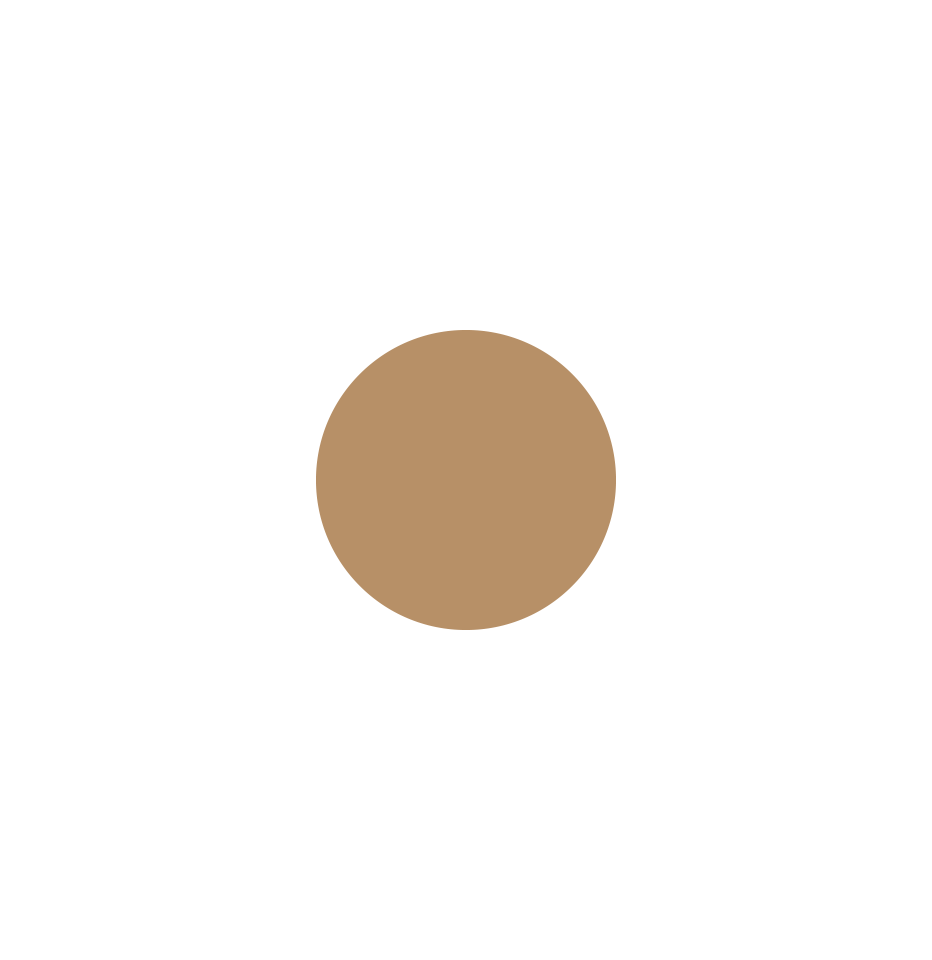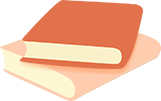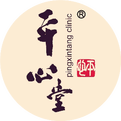In 2003, during the SARS outbreak in Hong Kong, I first proposed the principle of grasping the three yangs and treating at the taiyang.
The key to treatment isgrasping the three yangs and treating at the taiyang
 The first layer of meaning in grasping the three yangs isto focus the differentiation and treatment on the taiyang, shaoyang, and yangming stages of the six meridians in the treatment of exogenous diseases at the onset.In the Shang Han Lun, the three yang diseases represent the stage of exogenous diseases with a strong pathogenic factor. These three stages also include the combined diseases of taiyang and yangming, taiyang and shaoyang, three yang diseases, taiyang and shaoyang coexisting diseases, and the conditions and pathogenesis of yangming. The pathogenesis and clinical features of the three yang diseases in the Shang Han Lun are fundamentally consistent with the concepts of wei-level diseases, qi-level diseases, or upper, middle, and lower jiao diseases in warm disease theory, as well as the concepts of wei-qi coexisting diseases and qi-blood coexisting diseases.
The first layer of meaning in grasping the three yangs isto focus the differentiation and treatment on the taiyang, shaoyang, and yangming stages of the six meridians in the treatment of exogenous diseases at the onset.In the Shang Han Lun, the three yang diseases represent the stage of exogenous diseases with a strong pathogenic factor. These three stages also include the combined diseases of taiyang and yangming, taiyang and shaoyang, three yang diseases, taiyang and shaoyang coexisting diseases, and the conditions and pathogenesis of yangming. The pathogenesis and clinical features of the three yang diseases in the Shang Han Lun are fundamentally consistent with the concepts of wei-level diseases, qi-level diseases, or upper, middle, and lower jiao diseases in warm disease theory, as well as the concepts of wei-qi coexisting diseases and qi-blood coexisting diseases. The second layer of meaning in grasping the three yangs isto place the formulas for treating three yang diseases at the core of exogenous disease treatment.Thus, it can be said that the formulas recorded in the Shang Han Lun and warm disease theory during the “three yang” or “wei, qi” stages are the most important arsenal for TCM treatment of exogenous diseases.The main formulas in this arsenal include:Ma Huang Tang (Ephedra Decoction), Gui Zhi Tang (Cinnamon Twig Decoction), Yue Bi Tang (Yue Bi Decoction), Ge Gen Tang (Kudzu Decoction), Qing Long Tang (Blue Dragon Decoction), Zhi Zi Chi Tang (Gardenia and Soybean Decoction), Chai Hu Tang (Bupleurum Decoction), Bai Hu Tang (White Tiger Decoction), Cheng Qi Tang (Purgative Decoction), Chai Hu Gui Zhi Tang (Bupleurum and Cinnamon Twig Decoction), Ma Xing Shi Gan Tang (Ephedra, Apricot Kernel, Gypsum, and Licorice Decoction), Huang Qin Tang (Scutellaria Decoction), Ge Gen Qin Lian Tang (Kudzu, Scutellaria, and Coptis Decoction), Xiao Xian Xiong Tang (Minor Chest Distress Decoction), Yin Qiao San (Honeysuckle and Forsythia Powder), Sang Ju Yin (Mulberry Leaf and Chrysanthemum Drink), San Ren Tang (Three Nut Decoction), Huang Qin Hua Shi Tang (Scutellaria and Talcum Decoction), Xin Jia Xiang Ru Yin (Newly Added Elsholtzia Decoction), Huo Xiang Zheng Qi San (Agastache Powder), Xing Su San (Apricot and Perilla Powder), Sang Xing Tang (Mulberry and Apricot Decoction), Qing Zao Jiu Fei Tang (Clearing Dryness and Rescue the Lung Decoction), Yu Nu Jian (Jade Woman Decoction), Zhu Ye Shi Gao Tang (Bamboo Leaf and Gypsum Decoction), Pu Ji Xiao Du Yin (Universal Detoxifying Decoction), and others, as well as Qian Jin Wei Jing Tang (Thousand Gold Reed Decoction), Qiang Huo Sheng Shi Tang (Notopterygium Decoction), Qing Wen Bai Du Yin (Clear Epidemic and Eliminate Toxins Decoction), Sheng Jiang San (Fresh Ginger Powder), Jia Wei Xiang Su Yin (Modified Perilla and Apricot Decoction), Jing Fang Bai Du San (Schizonepeta and Saposhnikovia Powder), Ren Shen Bai Du San (Ginseng Powder), Shuang Jie San (Double Relief Powder), Liang Ge San (Cooling and Purging Powder), and Fang Feng Tong Sheng San (Siler and Unblocking Powder).In addition, the formulas for treating “taiyang and shaoyin coexisting” in the Shang Han Za Bing Lun such as Ma Huang Fu Zi Xi Xin Tang (Ephedra, Aconite, and Asarum Decoction), Ma Huang Fu Zi Gan Cao Tang (Ephedra, Aconite, and Licorice Decoction), and Gui Gan Jiang Jiao Ma Xin Fu Zi Tang (Cinnamon, Licorice, Ginger, Jujube, and Asarum Decoction) should also be included in this arsenal.
The second layer of meaning in grasping the three yangs isto place the formulas for treating three yang diseases at the core of exogenous disease treatment.Thus, it can be said that the formulas recorded in the Shang Han Lun and warm disease theory during the “three yang” or “wei, qi” stages are the most important arsenal for TCM treatment of exogenous diseases.The main formulas in this arsenal include:Ma Huang Tang (Ephedra Decoction), Gui Zhi Tang (Cinnamon Twig Decoction), Yue Bi Tang (Yue Bi Decoction), Ge Gen Tang (Kudzu Decoction), Qing Long Tang (Blue Dragon Decoction), Zhi Zi Chi Tang (Gardenia and Soybean Decoction), Chai Hu Tang (Bupleurum Decoction), Bai Hu Tang (White Tiger Decoction), Cheng Qi Tang (Purgative Decoction), Chai Hu Gui Zhi Tang (Bupleurum and Cinnamon Twig Decoction), Ma Xing Shi Gan Tang (Ephedra, Apricot Kernel, Gypsum, and Licorice Decoction), Huang Qin Tang (Scutellaria Decoction), Ge Gen Qin Lian Tang (Kudzu, Scutellaria, and Coptis Decoction), Xiao Xian Xiong Tang (Minor Chest Distress Decoction), Yin Qiao San (Honeysuckle and Forsythia Powder), Sang Ju Yin (Mulberry Leaf and Chrysanthemum Drink), San Ren Tang (Three Nut Decoction), Huang Qin Hua Shi Tang (Scutellaria and Talcum Decoction), Xin Jia Xiang Ru Yin (Newly Added Elsholtzia Decoction), Huo Xiang Zheng Qi San (Agastache Powder), Xing Su San (Apricot and Perilla Powder), Sang Xing Tang (Mulberry and Apricot Decoction), Qing Zao Jiu Fei Tang (Clearing Dryness and Rescue the Lung Decoction), Yu Nu Jian (Jade Woman Decoction), Zhu Ye Shi Gao Tang (Bamboo Leaf and Gypsum Decoction), Pu Ji Xiao Du Yin (Universal Detoxifying Decoction), and others, as well as Qian Jin Wei Jing Tang (Thousand Gold Reed Decoction), Qiang Huo Sheng Shi Tang (Notopterygium Decoction), Qing Wen Bai Du Yin (Clear Epidemic and Eliminate Toxins Decoction), Sheng Jiang San (Fresh Ginger Powder), Jia Wei Xiang Su Yin (Modified Perilla and Apricot Decoction), Jing Fang Bai Du San (Schizonepeta and Saposhnikovia Powder), Ren Shen Bai Du San (Ginseng Powder), Shuang Jie San (Double Relief Powder), Liang Ge San (Cooling and Purging Powder), and Fang Feng Tong Sheng San (Siler and Unblocking Powder).In addition, the formulas for treating “taiyang and shaoyin coexisting” in the Shang Han Za Bing Lun such as Ma Huang Fu Zi Xi Xin Tang (Ephedra, Aconite, and Asarum Decoction), Ma Huang Fu Zi Gan Cao Tang (Ephedra, Aconite, and Licorice Decoction), and Gui Gan Jiang Jiao Ma Xin Fu Zi Tang (Cinnamon, Licorice, Ginger, Jujube, and Asarum Decoction) should also be included in this arsenal. The nearly forty commonly used formulas selected from TCM clinical classics and later practitioners may seem complicated at first glance, but if classified based on the three yang diseases and wei-level and qi-level syndromes, as well as the six excesses of wind, cold, summer heat, dampness, dryness, and fire, and the “five internal evils” of wind, fire, dampness, dryness, and cold, the corresponding formulas for each angle actually amount to only three to five.In other words,once the diagnosis of the pathogenesis is clear, the various exogenous diseases caused by the six excesses and the three to five typical formulas for epidemic and infectious diseases will immediately shine before the physician’s eyes without hesitation.The formulas in this arsenal are well-known to clinical TCM practitioners, and if young practitioners think seriously about it, they will surely make reasonable selections based on the meanings of the external six excesses and internal five evils.More than fifty years ago, when I first entered clinical practice, it was during the turmoil of the Cultural Revolution. There was a shortage of medical resources at the grassroots level, and exogenous diseases were rampant throughout the year. The above forty formulas were organized during that time and have been repeatedly used with countless benefits. If the selection of formulas and medications is accurate and timely, patients can be cured and discharged within days before the results of Western medical viral tests are available.People often say: “Three yang diseases are easy to treat, while three yin diseases are difficult to treat.” This is a summary of a thousand years of TCM practice, and it emphasizes the true meaning of grasping the three yangs.To treat at the taiyang means to grasp the taiyang disease or wei-level disease stage at the onset of exogenous diseases, ensuring that the right formulas and medications are used without delay, which can effectively cure exogenous diseases at their nascent stage.“The key to TCM’s successful prevention and treatment of SARS
The nearly forty commonly used formulas selected from TCM clinical classics and later practitioners may seem complicated at first glance, but if classified based on the three yang diseases and wei-level and qi-level syndromes, as well as the six excesses of wind, cold, summer heat, dampness, dryness, and fire, and the “five internal evils” of wind, fire, dampness, dryness, and cold, the corresponding formulas for each angle actually amount to only three to five.In other words,once the diagnosis of the pathogenesis is clear, the various exogenous diseases caused by the six excesses and the three to five typical formulas for epidemic and infectious diseases will immediately shine before the physician’s eyes without hesitation.The formulas in this arsenal are well-known to clinical TCM practitioners, and if young practitioners think seriously about it, they will surely make reasonable selections based on the meanings of the external six excesses and internal five evils.More than fifty years ago, when I first entered clinical practice, it was during the turmoil of the Cultural Revolution. There was a shortage of medical resources at the grassroots level, and exogenous diseases were rampant throughout the year. The above forty formulas were organized during that time and have been repeatedly used with countless benefits. If the selection of formulas and medications is accurate and timely, patients can be cured and discharged within days before the results of Western medical viral tests are available.People often say: “Three yang diseases are easy to treat, while three yin diseases are difficult to treat.” This is a summary of a thousand years of TCM practice, and it emphasizes the true meaning of grasping the three yangs.To treat at the taiyang means to grasp the taiyang disease or wei-level disease stage at the onset of exogenous diseases, ensuring that the right formulas and medications are used without delay, which can effectively cure exogenous diseases at their nascent stage.“The key to TCM’s successful prevention and treatment of SARS In 2003, during the SARS outbreak, I proposed the concept of the “three firsts” in treating SARS. These are:“Grasp the first stage of treating the exterior syndrome, grasp the first method of dispersing cold and inducing sweating, and choose the first formula for clinical initiation.”Thus, treating SARS became as simple as treating a common cold. During multiple public lectures, I summarized the advantages of TCM in prevention and treatment in two sentences: “Prevent SARS before it becomes a cold, treat SARS while it is a cold.”In 2003 in Hong Kong, I participated in the treatment and related theoretical and clinical research of suspected SARS cases, early, late, recovery, and post-recovery phases.
In 2003, during the SARS outbreak, I proposed the concept of the “three firsts” in treating SARS. These are:“Grasp the first stage of treating the exterior syndrome, grasp the first method of dispersing cold and inducing sweating, and choose the first formula for clinical initiation.”Thus, treating SARS became as simple as treating a common cold. During multiple public lectures, I summarized the advantages of TCM in prevention and treatment in two sentences: “Prevent SARS before it becomes a cold, treat SARS while it is a cold.”In 2003 in Hong Kong, I participated in the treatment and related theoretical and clinical research of suspected SARS cases, early, late, recovery, and post-recovery phases.
This involved numerous formulas including Ma Huang Tang, Gui Zhi Tang, Ge Gen Tang, Da Qing Long Tang (Major Blue Dragon Decoction), Xiao Qing Long Tang (Minor Blue Dragon Decoction), Yue Bi Tang, Ma Xing Shi Gan Tang, Xiao Chai Hu Tang (Minor Bupleurum Decoction), Da Chai Hu Tang (Major Bupleurum Decoction), Chai Hu Gui Zhi Tang, Xiao Xian Xiong Tang, and Sheng Jiang San.
At that time, the discussion of SARS treatment formulas in various media was based on the principle of “grasping the three yangs and treating at the taiyang,” combined with a gradual evolution and long-term experience in treating exogenous diseases, I tailored seven different formulas.Despite significant resistance to TCM participation in treatment at that time, I became more convinced of the rationality of these seven formulas from limited treatments and subsequent reflections and summaries. Formulas for treating SARS First, if the disease initially presents with a predominance of external cold, mild fever, and obvious exterior obstruction, use Gui Zhi Ma Huang Ge Ban Tang (Cinnamon and Ephedra Half Decoction) or Jia Wei Xiang Su Yin (Modified Perilla and Apricot Decoction).Second, if the disease presents with exterior cold obstruction and significant internal heat, use Gui Zhi Ma Huang Ge Ban Tang (Cinnamon and Ephedra Half Decoction) minus Gui Zhi, adding Chai Hu, Huang Qin, and Ge Gen.Third, if the disease initially presents as typical external cold with internal heat, use Chai Hu Gui Zhi Tang (Bupleurum and Cinnamon Twig Decoction) minus Ren Shen, adding Ge Gen, and increasing the dosages of Chai Hu and Ge Gen.Fourth, if the disease presents with significant internal heat and obstruction in the three jiao, use Chai Hu Gui Zhi Tang (Bupleurum and Cinnamon Twig Decoction) minus Gui Zhi and Ren Shen, adding Jiang Can, Chan Yi, and Sheng Shi Gao.
Fifth, if the disease presents with cough, white phlegm, and difficulty in expectoration, use Xiao Chai Hu Tang (Minor Bupleurum Decoction) with Fu Ling, Xing Ren, Ge Gen, Jiang Can, and Chan Yi.
Sixth, if the disease presents with heat obstructing the lungs, use Xiao Chai Hu Tang (Minor Bupleurum Decoction) minus Ren Shen combined with Ma Xing Shi Gan Tang (Ephedra, Apricot Kernel, Gypsum, and Licorice Decoction) and Sheng Jiang San.
Seventh, if the disease presents with yellow, sticky phlegm that is difficult to expectorate and wheezing, combine Xiao Xian Xiong Tang (Minor Chest Distress Decoction) with the above formulas; if there is constipation, increase the dosage of Da Huang to purge lung heat and relieve intestinal obstruction.
The above seven formulas, modified during the SARS outbreak, have also been frequently used in treating avian influenza, H1N1 influenza, and pediatric exogenous fevers.“People often say:“Treating exogenous diseases is like a general, while treating internal injuries is like a counselor.” To treat exogenous diseases, one must be like a general with a sword, ensuring immediate results and curing the disease with the right medicine.The greatest characteristic of classic formulas is that they have fewer ingredients, larger dosages, specific effects, and quick results.In the Shang Han Lun, the average number of ingredients in decoctions is 4.7, while in the Wen Bing Tiao Bian, it is 6.3. The teachings of my predecessors, Chai Hao Ran and Liu Du Zhou, regarding internal injuries and miscellaneous diseases state: “Good formulas do not exceed 12 ingredients.” In treating exogenous diseases, I have never seen them prescribe more than 10 ingredients. If the clinical differentiation is carefully considered, formulas composed of seven to eight ingredients often lead to rapid recovery with as few as one dose or at most two to three doses.In summary,the clinical characteristics of TCM treatment for exogenous diseases can be summarized as individualized formulas, timely adjustments, flexible medication, clear thinking, and remarkable efficacy..As long as the principle of differentiation and treatment is followed, “grasping the three yangs and treating at the taiyang,” young TCM practitioners can achieve immediate results and cure diseases effectively.When SARS was prevalent, someone asked me what my most significant feeling was. I focused on two points:Early prevention and treatment primarily with TCM, and a combination of TCM and Western medicine for severe patients.Please pay attention to tomorrow’s content:The advantages of TCM in preventing and treating exogenous diseases lie in its human-centered approach.Previous exciting content: The unique advantages of TCM in preventing and treating exogenous diseases.

